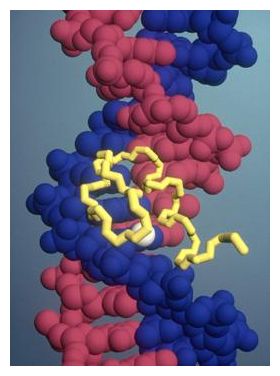
Molecular tools that alter specific sites in the genome hold huge promise for genetic research and gene therapy. But the first genome-wide surveys of where these tools, called zinc-finger nucleases, act has surprised researchers.
Two papers published today, one in Nature Biotechnology1 and one in Nature Methods,2 show that although zinc-finger nucleases are highly specific, the methods previously used to predict where they might go wrong miss the mark.
Zinc-finger nucleases are enzymes that can be designed to find specific DNA sequences in the genome and cut them out, deleting those sequences or swapping one gene for another. Clinical trials are underway in HIV patients of zinc-finger nucleases that remove a gene that allows the virus to enter immune cells.
The enzymes should be a vast improvement over conventional gene therapy, which uses viruses to insert genes into the genome almost at random. This unpredictability has caused problems: in one of the first clinical trials of gene therapy, five children treated for a rare immune disorder developed leukaemia because the viral vector embedded itself near cancer-causing genes.3
Zinc-finger nucleases are far more specific, but they still have the potential to make unwanted changes. "We need to know if they actually go where we think they will go," says David Segal, a molecular biologist at the University of California, Davis, who was not involved in the latest studies. "Nobody wants to have a zinc-finger nuclease loose in their cells that could make cancer-causing mutations."
Needles in haystacks
Christof von Kalle, an oncologist at the German Cancer Research Center in Heidelberg was a member of the team that tracked down the causes of leukaemia in the earlier trial. He decided to look for errors made by zinc-finger nucleases.
The enzymes' rare mistakes are difficult to find, because they could be lurking in any of the thousands of cells affected by a treatment. It is impractical to trawl through each treated cell's genome looking for DNA breaks.
In the past, researchers have looked for zinc-finger nuclease errors by assaying where in the genome the enzymes might bind, and checking to see whether those sequences were broken.
Von Kalle and his colleagues took a different approach, exposing treated cells to a virus that inserts itself into breaks in the host genome1. They then looked for viral genes in the cells to discover where the zinc-finger nucleases had been at work. Among the enzymes tested were two that are similar to those being used in clinical trials.
The team found off-target breaks in locations that were not predicted by conventional methods.
This is an important lesson for the field, says Dana Carroll, a biochemist at the University of Utah in Salt Lake City, who was not involved in the studies. "It raises the bar," he says. "It shows that when you look at DNA breaks that are actually made in cells, you find things that you wouldn't have predicted."
Off target
David Liu, a chemical biologist at Harvard University in Cambridge, Massachusetts, developed a different way to search for unwanted DNA breaks.2 His team first screened a large library of DNA fragments in vitro to find those cleaved by either of two zinc-finger nucleases. The researchers then looked for similar sequences in the human genome, and tested whether these sequences were cleaved in human cells grown in culture.
Liu found that the enzymes cut more widely than had been expected. One of the enzymes that Liu and his colleagues tested was similar to one being used in the HIV clinical trials. The team found that on rare occasions, the enzyme breaks DNA near a gene linked to cancer. It is difficult to determine whether this poses a danger to patients, says Segal, because Liu's team tested the enzyme using leukaemia cell cultures, whereas the trial drug targets T-cells, a type of immune cell.
Philip Gregory, chief scientific officer at Sangamo Biosciences in Richmond, California, which makes the trial drug, also notes that Sangamo's nuclease has been further optimized for clinical use since the version in Liu and von Kalle's work was made.
Before embarking on clinical trials, Sangamo tested the safety of its enzyme by engrafting more than one billion genetically modified cells into over 150 animals and then looking for unwanted side effects.
Gregory thinks that von Kalle's method, which was developed with Sangamo, could be useful for screening future clinical candidates. But he believes that regulators at the US Food and Drug Administration (FDA) are unlikely to give up their requirement for safety testing in live animals. "The FDA is underwhelmed by fancy molecular techniques," he says. "They like the old-school, 'show me the modified cells and stick them into animals' approach."
References
- Gabriel, R. et al. Nature Biotechnol. http://dx.doi.org/10.1038/nbt.1948 (2011).
- Pattanayak, V., Ramirez, C. L., Joung, J. K. & Liu, D. R. Nature Methods http://dx.doi.org/10.1038/nmeth.1670 (2011).
- Hacein-Bey-Abina, S. et al. Science 302, 415-419 (2003). | Article | PubMed | ISI | ChemPort |



Reader Comments
to our Newsletter